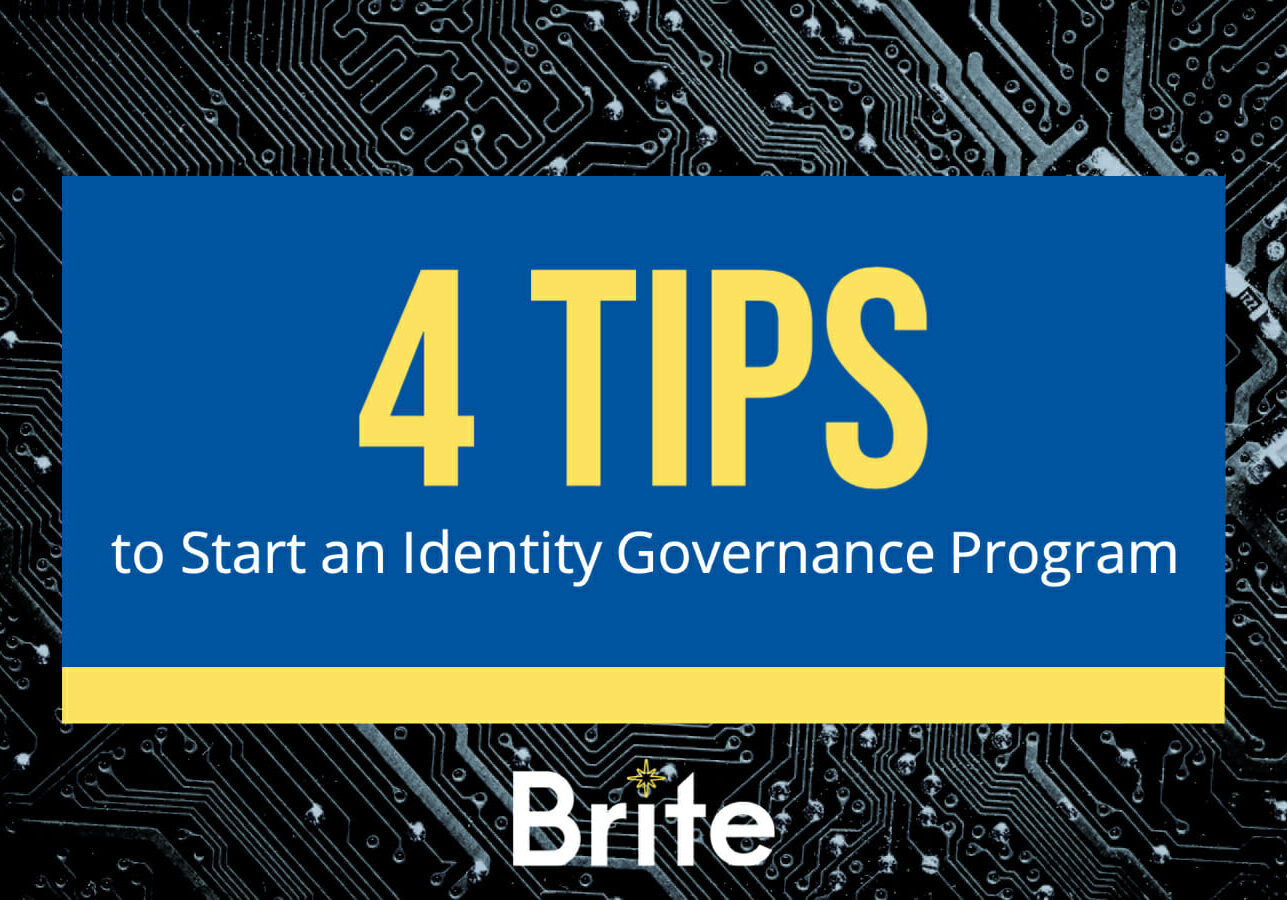4 Tips to Start an Identity Governance Program
February 3, 2021
Identity is the new buzzword in cybersecurity, and for a good reason. Identity governance and identity access management (IAM) programs shift the security focus from networks and devices to people. The reality is that behind every task, threat or attack is a person.
Organizations are challenged with managing identity, proper access and acceptable use of employees, contractors and partners across multiple networks and applications. IAM technologies and identity governance strategies touch every aspect of a business and it is because of this that it must be approached as an ongoing program, not a single project with an end date.
Let’s explore how a strong identity strategy can help your organization with understanding…
- What Identity Governance is
- Four Tips to Start a Successful Identity Governance and Identity Access Management (IAM) Program
What is Identity Governance?
From our partner SailPoint, identity governance is “enabling and securing digital identities for all users, applications and data. It allows businesses to provide automated access to an ever-growing number of technology assets while managing potential security and compliance risks.”
A complete identity governance strategy answers the following questions:
- Who has access to what?
- How did they get that access?
- What is being done with that access?
- Is there any sensitive information involved?
- Is all of that access appropriate/adequate?
- Can you prove it to auditors?
A successful program enables teams to gain control and implement policies around identity and access, which ultimately reduce risk and strengthens overall organizational security. Other added benefits include improved compliance, reduced operational costs and provides efficient access to the right business resources.
Tips to Start a Successful Identity Governance and Identity Access Management Program
Executing a strong identity program is no small task. Here are four tips to get you started off on the right foot.
- Understand what the business drivers are.
With identity programs being an organization-wide initiative, understanding what the business drivers are becomes essential in the road mapping process and ensuring value across different sectors. A helpful question during this step to is to explore are you looking for ROI, efficiencies, or automation? Additionally, is mitigating a risk or fixing an audit finding higher priority?
- Include representatives from all business areas affected by an IGA program. Getting stakeholder participation is critical.
Buy-in from all stakeholders is essential for success to ensure all expectations are met, proper collaboration and company-wide adaption. Since identity governance touches so many areas, each being at the table will only make the process go smoother.
- Create a communication plan around change management and make sure all stakeholders understand their role and the impact to their area of the business.
Creating a clear communication plan will drive understanding and clearly outlines future steps. This prep work helps avoid confusion and will ease the path to success throughout the program.
- Don’t go it alone! Engage experts to assist you through this journey.
No one ever claimed that implementing an identity governance or identity access management program would be easy. Brite joins forces with industry experts like Integral Partners and SailPoint to help organizations create the right program for it’s unique needs. The longevity of the program paired with specialized experts will make the journey successful.
Bonus tip: A good mentality is key in creating and implementing such a wide-spread and critical program. Whether you’re ready to jump into roadmap planning today, or are preparing to plan your roadmap, remember that it’s a marathon, not a sprint.
Get started on your identity journey today with more insights!
On-demand webinar “Building a successful Identity and Access Management program (for any maturity level)”.

Posted in Cybersecurity Technology, Featured Resources, Identity
